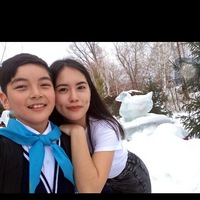
3) C → CO → CO2 → K2CO3→ KCl → KNO3
 0
0
 0
0
Ответы на вопрос
 Внимание! Ответы на вопросы дают живые люди. Они могут содержать ошибочную информацию, заблуждения, а также ответы могут быть сгенерированы нейросетями. Будьте внимательны. Если вы уверены, что ответ неверный, нажмите кнопку "Пожаловаться" под ответом.
Внимание! Ответы на вопросы дают живые люди. Они могут содержать ошибочную информацию, заблуждения, а также ответы могут быть сгенерированы нейросетями. Будьте внимательны. Если вы уверены, что ответ неверный, нажмите кнопку "Пожаловаться" под ответом.

Ответ:
CO2 + C ⇄ 2CO
2CO + O2 → 2CO2
2KOH + CO2 → K2CO3 + H2O
K2CO3 + 2HCl → 2KCl + CO2 + H2O
NaNO3 + KCl → NaCl + KNO3
Объяснение:
 0
0
 0
0

The sequence you've provided appears to represent a series of chemical reactions. Let's break it down step by step:
C → This likely represents the element carbon (C) in its elemental form.
CO → This represents carbon monoxide (CO), which is formed by the combination of carbon (C) and oxygen (O).
CO2 → This represents carbon dioxide (CO2), which is formed by the combination of carbon (C) and oxygen (O2).
K2CO3 → This represents potassium carbonate (K2CO3), which is a salt that contains potassium (K), carbon (C), and oxygen (O).
KCl → This represents potassium chloride (KCl), which is a salt that contains potassium (K) and chlorine (Cl).
KNO3 → This represents potassium nitrate (KNO3), which is a salt that contains potassium (K), nitrogen (N), and oxygen (O).
This sequence represents a series of chemical reactions where carbon (C) is initially converted to various compounds containing carbon, oxygen, and other elements like potassium (K) and chlorine (Cl). If you have any specific questions or need more information about any of these reactions, please feel free to ask.
 0
0
 0
0
Похожие вопросы
Топ вопросов за вчера в категории Химия
Последние заданные вопросы в категории Химия
-
Математика
-
Литература
-
Алгебра
-
Русский язык
-
Геометрия
-
Английский язык
-
Химия
-
Физика
-
Биология
-
Другие предметы
-
История
-
Обществознание
-
Окружающий мир
-
География
-
Українська мова
-
Информатика
-
Українська література
-
Қазақ тiлi
-
Экономика
-
Музыка
-
Право
-
Беларуская мова
-
Французский язык
-
Немецкий язык
-
МХК
-
ОБЖ
-
Психология
-
Физкультура и спорт
-
Астрономия
-
Кыргыз тили
-
Оʻzbek tili























